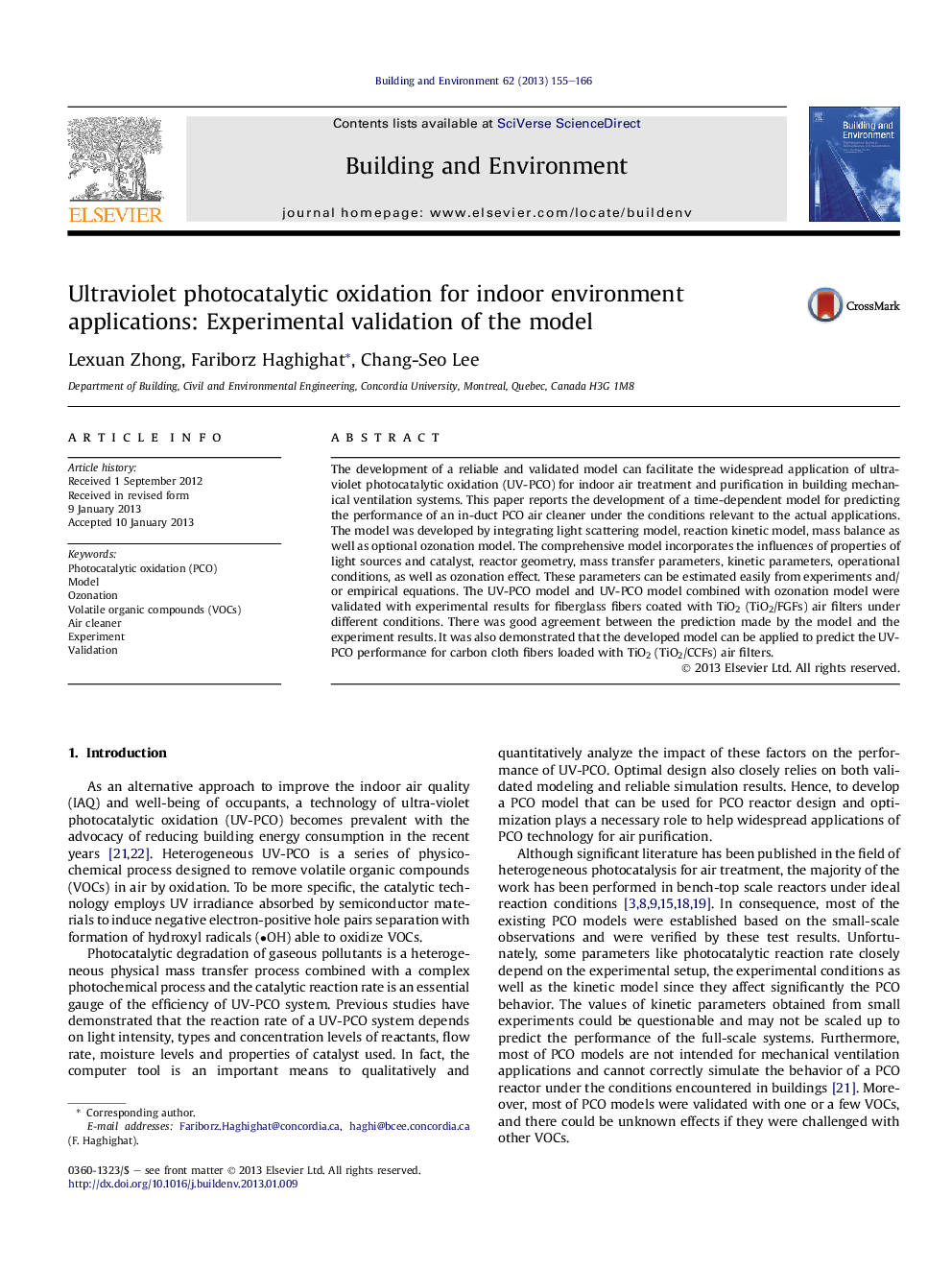| Article ID | Journal | Published Year | Pages | File Type |
|---|---|---|---|---|
| 248319 | Building and Environment | 2013 | 12 Pages |
The development of a reliable and validated model can facilitate the widespread application of ultra-violet photocatalytic oxidation (UV-PCO) for indoor air treatment and purification in building mechanical ventilation systems. This paper reports the development of a time-dependent model for predicting the performance of an in-duct PCO air cleaner under the conditions relevant to the actual applications. The model was developed by integrating light scattering model, reaction kinetic model, mass balance as well as optional ozonation model. The comprehensive model incorporates the influences of properties of light sources and catalyst, reactor geometry, mass transfer parameters, kinetic parameters, operational conditions, as well as ozonation effect. These parameters can be estimated easily from experiments and/or empirical equations. The UV-PCO model and UV-PCO model combined with ozonation model were validated with experimental results for fiberglass fibers coated with TiO2 (TiO2/FGFs) air filters under different conditions. There was good agreement between the prediction made by the model and the experiment results. It was also demonstrated that the developed model can be applied to predict the UV-PCO performance for carbon cloth fibers loaded with TiO2 (TiO2/CCFs) air filters.
► A reliable two-phase based time-dependent UV-PCO model was developed. ► The comprehensive model incorporated the influences of various parameters. ► Ozonation model was proposed to describe the VOCs removal in the reaction with ozone. ► There was good agreement between the model predictions and the experiment results. ► The model can be applied to predict UV-PCO performance for different air filters.
